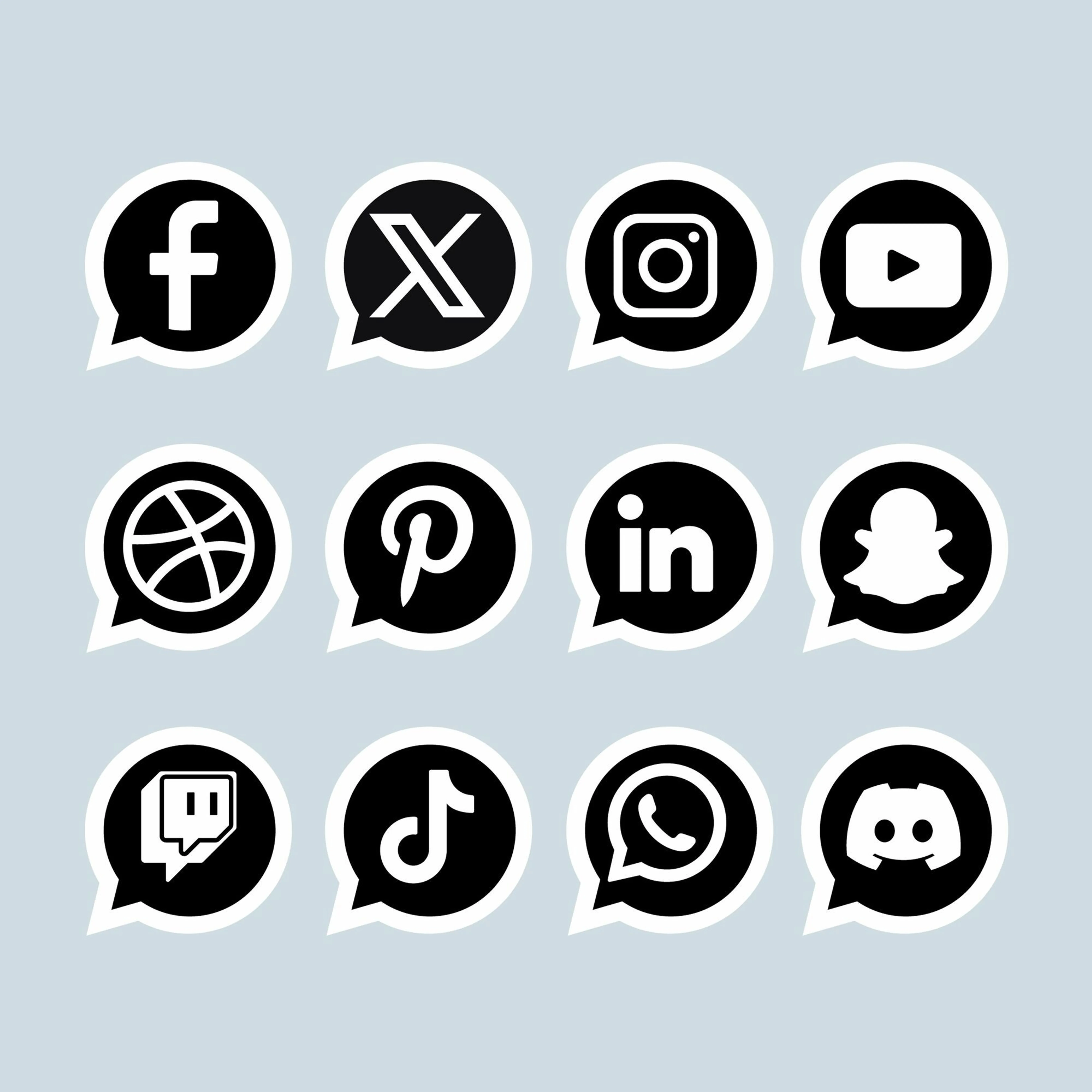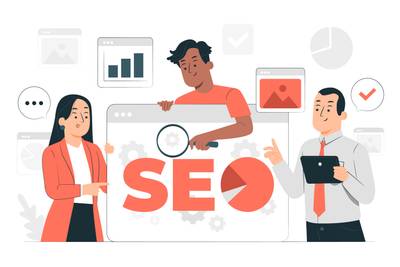The two main pillars of an online presence are websites and social media. Each of these tools offers unique benefits to businesses and allows for the achievement of different marketing goals.
- A website is your online business card, a place where potential customers can learn more about your offer, history and values. It is also a platform for presenting products, publishing valuable content and generating sales leads. It is also a place to which all marketing activities lead.
- Social media, on the other hand, enables direct interaction with recipients, building an engaged community around the brand, and quickly responding to customer needs and preferences. Platforms such as Facebook, Instagram, and LinkedIn are also effective tools for promotion and advertising.
The choice between a website and social media doesn’t have to be final. In fact, the best results are achieved by companies that skillfully combine both of these channels, creating a coherent and complementary marketing strategy.
Website - business benefits

Full control over content and brand image
Unlike social media, where we are limited by the format and platform regulations, on our own website we have full control over the published content and the way we present our brand. We can freely shape the company's image, choose the graphic design, layout and navigation of the page so that it fully corresponds to our visual identity and brand values.
Building credibility and professionalism
A company with its own, well-designed and functional website is perceived as more credible and professional in the eyes of potential clients. A website is a place where we can present our team, the company's history, awards and certificates, as well as references from satisfied clients. All this builds trust and increases the chances of cooperation by visitors.
For example, if we run a law firm, our website should present the profiles of our specialists along with their experience and achievements, as well as describe the scope of services offered and the way we work with the client. Such transparency and accessibility of information significantly increases our credibility in the eyes of potential clients.
Possibility to present the full range of products/services
A website is the perfect place to present the entire spectrum of our products or services. We can create an extensive structure of subpages, each dedicated to a specific area of our activity, and describe in detail the benefits of choosing our offer. It is also a space for presenting prices, terms of cooperation or options for adapting products to the individual needs of the customer.
Let's assume that we are a company offering comprehensive renovation services. On our website, we can clearly present the scope of work - from interior design, through construction and installation work, to finishing and decoration. We can illustrate each service using a portfolio of completed projects and customer references, which will make it easier for potential clients to decide on cooperation.
Ease of finding in search engines (SEO)
A well-optimized website has a much better chance of ranking high in Google search results, which translates into increased organic traffic and reaching more potential customers. By choosing the right keywords, creating valuable content and acquiring backlinks, we can increase the visibility of our company on the web and attract users who are actively looking for our products or services.
As an example, let's take an online store with ecological toys for children. By optimizing product descriptions, categories and blog subpages for the phrase "ecological toys for children", we increase the chances of our website appearing in the top positions in Google for this query. As a result, parents looking for healthy and safe solutions for their children will go directly to our store.
Independence from the whims of platforms
By having our own website, we are not dependent on the changing algorithms and regulations of social media platforms. We do not have to worry that our hard-earned community will be lost as a result of changes in the rules of operation of Facebook or Instagram. A website is our own, independent communication channel, on which we can freely shape relationships with recipients.
A perfect example is the situation of companies that largely based their communication on organic reach on Facebook. With the change of the algorithm and the limitation of free access to fans, many of them lost the possibility of contact with their community overnight. If these same companies developed their own websites in parallel and took care of building an email database, their reach would be much less susceptible to such turbulence.
Social Media - Benefits for Business
Social media has become an integral part of many companies’ marketing strategies. Platforms like Facebook, Instagram, LinkedIn, and Twitter offer unique benefits, allowing brands to connect directly with their audiences, build an engaged community, and respond quickly to customer needs.

Direct contact and interaction with recipients
Social media is the perfect tool for creating an active and loyal community around our brand. By regularly publishing valuable and engaging content, initiating discussions and encouraging interaction, we can gather a group of dedicated ambassadors around the company who will be happy to share our products or services with their friends.
A great example is a clothing brand that not only presents new collections on its Instagram profile, but also encourages followers to post photos of themselves in their clothes under a dedicated hashtag. The most interesting photos are then shared on the brand's profile, which gives fans a sense of authentic involvement and co-creation of the brand's image. Such a community becomes a natural brand ambassador, willingly recommending its products to their friends.
Building an engaged community around the brand
Social media is the perfect tool for creating an active and loyal community around our brand. By regularly publishing valuable and engaging content, initiating discussions and encouraging interaction, we can gather a group of dedicated ambassadors around the company who will be happy to share our products or services with their friends.
A great example is a clothing brand that not only presents new collections on its Instagram profile, but also encourages followers to post photos of themselves in their clothes under a dedicated hashtag. The most interesting photos are then shared on the brand's profile, which gives fans a sense of authentic involvement and co-creation of the brand's image. Such a community becomes a natural brand ambassador, willingly recommending its products to their friends.
Responding quickly to trends and customer needs
Social media platforms allow companies to constantly monitor trends, opinions and customer sentiment. This allows brands to quickly respond to changing customer needs, adapt their offer and communication to current market expectations.
Imagine that you run an electronics store. By monitoring discussions on Twitter or in Facebook groups, you can see that many customers are looking for wireless headphones with specific parameters.
By responding to this trend, you can quickly introduce products that meet these criteria to your offer and communicate this to your customers via social media. Such responsiveness allows you not only to better respond to customer needs, but also to stay ahead of the competition.
Lower promotion costs compared to traditional media
Social media presence is associated with significantly lower costs than traditional forms of advertising, such as television, radio or press. Many platforms offer the possibility of precise advertising targeting based on demographics, interests or user behavior, which allows you to optimally use your marketing budget and reach the most valuable audience.
The ability to reach a wide audience
Social media brings together millions of users with diverse demographic profiles and interests. This is a huge opportunity for companies to reach new, potentially interested audiences, going beyond their traditional target groups. Thanks to the viral potential of social platforms, attractive content can quickly spread across the network, reaching audiences that we would not be able to identify ourselves.
Comparison of websites and social media
While both websites and social media are used to build a company's online presence, each of these tools has its own specifics and can be used to achieve different marketing goals.
Target groups and how to reach your audience
Websites and social media allow you to reach your audience in different ways. A company website mainly attracts people who are actively looking for information about products, services or the brand itself. These are users at the end of the purchase path, often ready to make a decision to convert.
Social media, on the other hand, gives you the opportunity to reach a much wider and more diverse group of recipients, often not directly interested in your brand. It is a great tool for building awareness, educating and engaging potential customers at the early stages of their purchasing journey.
Type of content presented and format of the message
Websites give companies complete freedom in terms of the content they present - from extensive product and service descriptions, through company blogs, to interactive tools or order configurators. This is the perfect place to publish long, substantive and educational content that allows for a comprehensive presentation of the brand's offer.
Social media, on the other hand, rewards short, engaging and visually appealing content. This is a space for building a brand's image through inspiring graphics, short videos or interactive formats such as surveys or live reports.
Degree of control over communication and image
A website gives companies full control over the content and brand image presented. It is a place where we can freely shape messages, choose graphic design and build the desired associations with the brand.
In the case of social media, our control is limited by the format and regulations of a given platform. We must adapt to the existing framework, while accepting the fact that our communication will be adjacent to content published by users, which is not always consistent with the image of our brand.
Opportunities to interact and build relationships with customers
Social media is the undisputed leader in terms of direct interaction and building relationships with recipients. With features like comments, private messages, and live broadcasts, brands can engage in dialogue with their customers, answer their questions and concerns, and engage them in content creation.
Websites are less likely to offer such direct forms of interaction. Although many of them have a contact form or chat, communication is more formal and one-sided than on social media platforms.
Costs of creating and conducting marketing activities
Launching and maintaining a company website is usually associated with higher costs than a presence in social media. We have to invest in the design and development of the website, purchase of a domain and hosting, as well as possible integration with payment or order processing systems.
Meanwhile, setting up a company profile in social media is usually free. Costs appear only when we decide to pay for the promotion of our posts or advertising, but they are usually much lower and more flexible than in the case of marketing based on a website.
Key factors for choosing online channels

Industry specificity and target group characteristics
The first step in choosing online channels is to thoroughly understand the specifics of your industry and the characteristics of your target group. Different sectors and audiences may require different approaches to online presence.
When determining the best online channels, it’s worth asking yourself: Where do our potential customers look for information about products and services in our industry? How do they make purchasing decisions? What content and communication formats appeal to them the most? The answers to these questions will allow us to choose the channels that will most effectively reach our target group.
Business goals (sales, branding, interaction)
The choice of online channels should be closely linked to the company's business goals. Depending on whether our main goal is sales, building brand awareness or interacting with recipients, other tools may prove optimal.
If we care primarily about generating leads and sales, optimizing the company's website for conversions will be key. We should take care of a clear website structure, attractive product descriptions, effective contact forms and tools for finalizing online transactions. Social media activities can serve as an additional channel for promotion and driving traffic to the website.
On the other hand, if our main goal is to build brand awareness and reach the widest possible audience, social media may prove crucial. Engaging, image-building content published on Facebook, Instagram or TikTok will allow us to increase our reach, gain recognition and create positive associations with the brand.
Companies focused on interaction and building lasting relationships with customers should focus on two-way communication, both on the website (e.g. via chat or contact form) and in social media, actively responding to comments, messages and engaging fans in discussions.
Optimal approach - website and social media synergy

Website as the center of online activities
A company website should be the center of our online presence - a stable foundation to which all other online activities lead. This is where we present the full scope of information about our offer, build an expert image and provide valuable content for recipients.
Let's imagine that we are a cosmetics brand. Our website is a place where customers can read detailed product descriptions, their composition and effects, as well as find advice on skin care or makeup. It is also a space where we build our authority by publishing valuable articles on the company blog, presenting expert recommendations or sharing research results confirming the effectiveness of our cosmetics.
A website is also a key element of the conversion path - a place to which we direct traffic from other channels (including social media) and where key purchasing decisions are made. By ensuring a clear website structure, attractive product descriptions and effective order forms, we increase the chances of converting visitors into paying customers.
Social media as channels for promotion and interaction with audiences
Social media is an ideal tool for promoting our website and its content, as well as building an engaged community around the brand. Platforms such as Facebook, Instagram or LinkedIn allow us to reach a wide range of potential customers with engaging, visually appealing content, encouraging them to interact and gradually building a relationship with the brand.
Let's go back to the example of a cosmetics brand. On our social media profiles, we can publish attractive photos and videos presenting products in action, inspiring makeup tutorials or skin care tips. Engaging content not only increases the reach and recognition of the brand, but also encourages recipients to visit our website to obtain additional information or purchase products.
Social media is also a space for direct interaction with recipients. By responding to comments and messages, organizing competitions or encouraging fans to share their opinions about our products, we build an authentic relationship with customers and gain valuable insights into their needs and preferences.
Cross-promotion and consistent branding across all channels
The key to effective synergy between a website and social media is their mutual promotion and consistent branding across all channels. Our online activities should create a single, coherent ecosystem, in which each element leads the recipient to the others, providing them with valuable content and experiences at every stage of the shopping journey.
On the website, it is worth highlighting links to social media profiles, encouraging visitors to follow and interact with the brand on these platforms as well. In turn, in social media, we should regularly post posts that direct traffic to the website, whether by sharing interesting articles from the company blog or attractive offers available only on the website.
Branding consistency should be manifested not only in a uniform visual identification (logo, colors, style of photos), but also in a consistent tone of communication and message across all platforms. Regardless of whether the recipient finds our website, Facebook profile or Instagram account, they should immediately recognize our brand and receive a coherent message, adapted to the specifics of the given channel.
Monitoring and optimizing activities in both channels
Effective website and social media synergy requires constant monitoring and optimization of activities in both channels. Regular analysis of key indicators (such as website traffic, social media engagement, conversion rate or revenue) will allow us to identify areas for improvement and adjust our activities accordingly.
It is worth tracking which content and formats work best on our website and which generate the greatest engagement in social media. Let's test different versions of posts, graphics or headlines to identify those that most effectively attract the attention of recipients and encourage them to take the desired actions.
Let's not be afraid to experiment with new formats and platforms. It may turn out that our brand will work great on TikTok, attracting a completely new group of young recipients, or that a series of webinars on YouTube will allow us to build an expert image in the industry. Constant monitoring and optimization of activities will allow us to stay up to date with trends and maximize the potential of each channel.
Summary
In summary, both the website and social media play an important role in the company's online presence, offering unique benefits and opportunities to reach the audience. The selection of the optimal channels should be based on a thorough understanding of the specifics of our industry, the characteristics of the target group and the business goals we want to achieve.
The website should be the center of our online presence - a stable foundation on which we build an expert image, present a full range of information about the offer and provide valuable content for the recipients. It is also a key element of the conversion path, a place for making purchasing decisions.
Social media, in turn, are ideal tools for promoting content from our website, building an engaged community around the brand and establishing direct interactions with the recipients. They allow you to reach a wide range of potential customers with engaging, visually attractive messages.
A good solution is the synergy of both of these channels - their mutual promotion, consistent branding and constant optimization of activities based on monitoring key indicators. Companies that can skillfully combine the potential of the website and social media gain a comprehensive online presence strategy that allows them to effectively implement various business goals.
Frequently asked questions
Should a business choose a website or social media?
The choice between a website and social media does not have to be final. The best results are achieved by companies that skillfully combine both of these channels, creating a coherent and mutually complementary marketing strategy. The website should be the center of the online presence, and social media should be used to promote it, build a community and interact with the audience.
What are the key benefits of having a company website?
A website gives a company full control over its content and brand image, builds credibility and professionalism, allows for the presentation of a full range of products/services, and increases the chances of gaining organic traffic from search engines through SEO optimization. It is the center of a company's online presence and a key element of the conversion path.
What are the main benefits of a company's presence on social media?
Social media enables direct interaction and building relationships with audiences, creating an engaged community around the brand, quickly responding to trends and customer needs, and reaching a wide audience thanks to the possibilities of precise advertising targeting, often at a lower cost than in the case of traditional media.
What to look for when choosing online channels for your company?
When choosing the best online channels, you should consider the specifics of your industry and the characteristics of your target group (where they look for information, how they make purchasing decisions), as well as your business goals (sales, building brand awareness, interacting with your audience). Different industries, audiences, and goals may require different communication strategies and tools.

Adam Naworski



